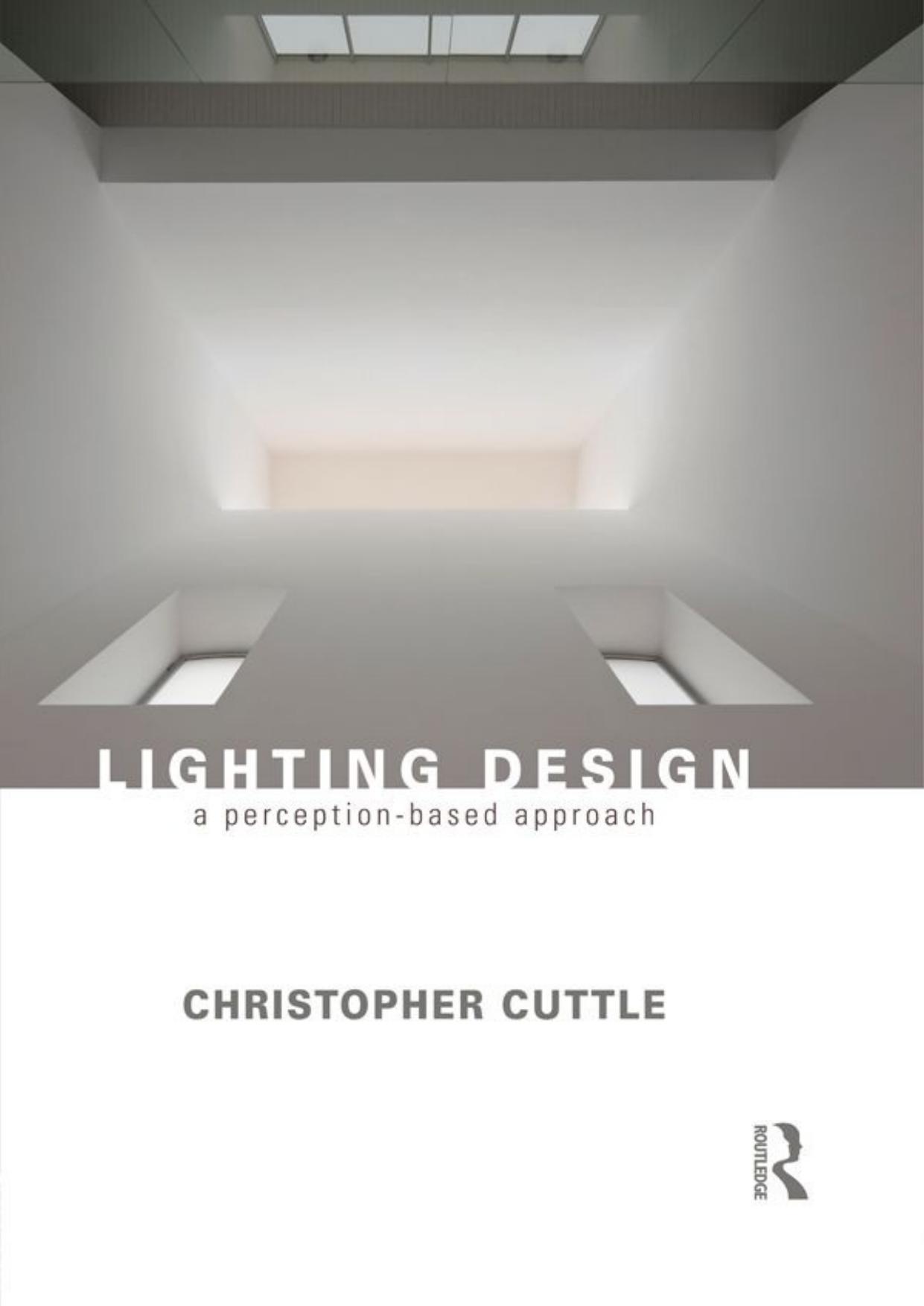Lighting Design: A Perception-Based Approach by Christopher Cuttle

Author:Christopher Cuttle [Cuttle, Christopher]
Language: eng
Format: epub, pdf
ISBN: 9781317631507
Publisher: Taylor and Francis
Published: 2015-03-04T22:00:00+00:00
My own approach has been to equip myself with a GretagMacbeth ColorChecker, and to use this to make objective assessments of the colour characteristics of light sources. The ColorChecker comprises 24 matt-surfaced colour samples mounted on a stiff board, and some time needs to be spent examining it under mid-day daylight, as shown in Figure 4.12. The bottom row is a grey scale, from full-white to full-black, and in this viewing condition all the samples appear neutral (no hint of hue), and the steps between them appear equally spaced. The next row up comprises primary colours, with the additive primaries to the left and the subtractive primaries to the right, and all of them appear as fully saturated, clear colours. The two rows above are moderate colours, some with special significance. For example, starting from the left-hand end of the top row, the samples represent dark skin, light skin, blue sky, foliage and so on. Explanations are given on the reverse side.
Start by gaining experience of the appearance of the ColorChecker under daylight. This gives you a tool that enables you to objectively assess the colour characteristics of other light sources and illumination conditions, whether you are evaluating a sample of new type of light source or visiting a recent lighting installation. The appearance of the ColorChecker will quickly reveal to you how your perception of colours is influenced by the illumination. It is worth noting that under low light levels, all the colours will appear dull and the intervals between the grey samples will appear compressed towards the darker end. Providing that illumination is sufficient to ensure photopic adaptation, the appearance of the primaries can be particularly revealing. While you will be accustomed to all of these samples appearing saturated, certain light sources can cause some of them to appear unexpectedly bright. To understand this, think back to the discussion of lamps used to enhance the appearance of various types of food displays. More generally, look carefully at the appearances of the moderate colours, noting that people are particularly sensitive about skin colours. When people complain about colour rendering, the most commonly occurring comments are of the ‘They make you look awful!’ type.
It is in this way that a lighting designer may select lamp types for various applications with confidence that the effect on the appearances of coloured room surfaces and objects will be in accord with the overall design objectives. From the foregoing discussion, it is clear that people have different expectations for daytime and night time illumination, and where the aim is to satisfy those expectations, the designer should provide for coincidence with the circadian cycle. Of course, circumstances will occur where the intention is to achieve alertness and visual stimulation when people would naturally be inclined to restfulness, and for these applications the intensity and duration of bright light exposure needs to be given consideration. Meanwhile it is to be expected that developments in light source technology will provide designers with increased options, and it is to be hoped that the lighting industry will respond with more useful product information.
Download
Lighting Design: A Perception-Based Approach by Christopher Cuttle.pdf
This site does not store any files on its server. We only index and link to content provided by other sites. Please contact the content providers to delete copyright contents if any and email us, we'll remove relevant links or contents immediately.
| American National Standards Institute (ANSI) Publications | Architecture |
| History | Measurements |
| Patents & Inventions | Research |
Whiskies Galore by Ian Buxton(41941)
Introduction to Aircraft Design (Cambridge Aerospace Series) by John P. Fielding(33094)
Small Unmanned Fixed-wing Aircraft Design by Andrew J. Keane Andras Sobester James P. Scanlan & András Sóbester & James P. Scanlan(32766)
Craft Beer for the Homebrewer by Michael Agnew(18199)
Turbulence by E. J. Noyes(7981)
The Complete Stick Figure Physics Tutorials by Allen Sarah(7339)
Kaplan MCAT General Chemistry Review by Kaplan(6903)
The Thirst by Nesbo Jo(6882)
Bad Blood by John Carreyrou(6584)
Modelling of Convective Heat and Mass Transfer in Rotating Flows by Igor V. Shevchuk(6408)
Learning SQL by Alan Beaulieu(6239)
Weapons of Math Destruction by Cathy O'Neil(6220)
Man-made Catastrophes and Risk Information Concealment by Dmitry Chernov & Didier Sornette(5957)
Digital Minimalism by Cal Newport;(5706)
Life 3.0: Being Human in the Age of Artificial Intelligence by Tegmark Max(5518)
iGen by Jean M. Twenge(5387)
Secrets of Antigravity Propulsion: Tesla, UFOs, and Classified Aerospace Technology by Ph.D. Paul A. Laviolette(5335)
Design of Trajectory Optimization Approach for Space Maneuver Vehicle Skip Entry Problems by Runqi Chai & Al Savvaris & Antonios Tsourdos & Senchun Chai(5039)
Pale Blue Dot by Carl Sagan(4960)
